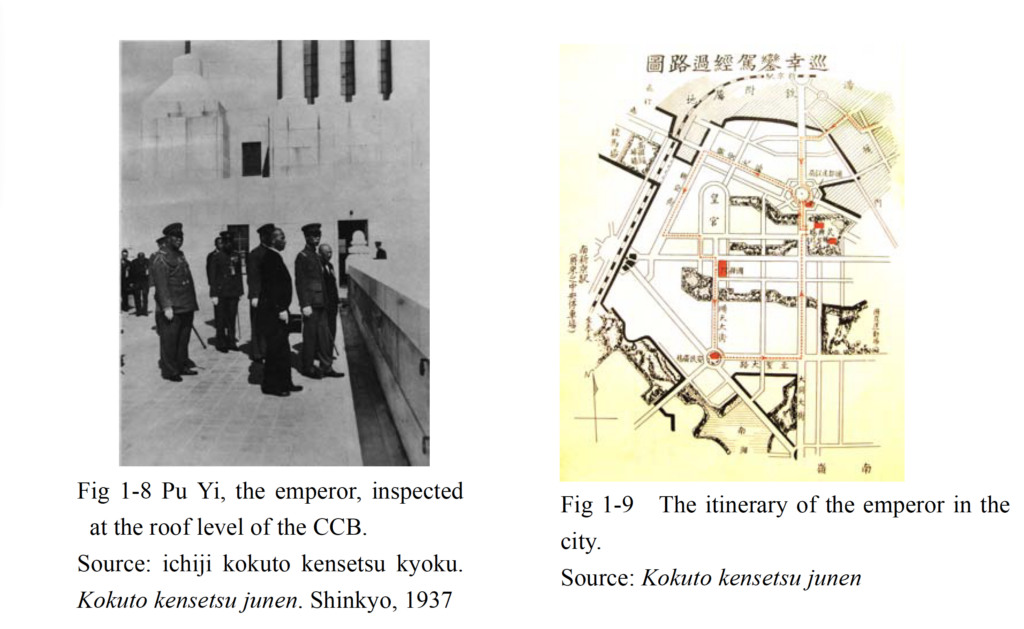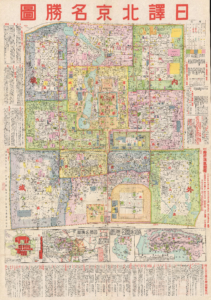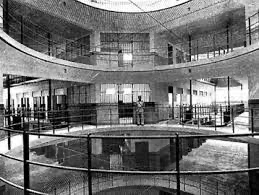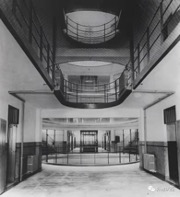This blog is a short introduction to my Spring essay followed by a short analysis of a few primary sources intend to use as part of the final analysis.
The relationship between sport and empire initiated the homogenization of societies, cultures and institutions whilst introducing western sports globally.1 This essay will explore the relationship between the Shanghai Yacht Club and its use as a font of colonial masculinity. Through the club’s role as a site of leisure, its function consolidated the British settler community in Shanghai as an economically, politically and racially separate and exclusive social unit from its establishment in 1868. The first recorded yacht race along the Shanghai River was in 1869 and soon after in 1871 the private Shanghai yacht club Boat house and Slipway Company was established in the bund; a ‘‘spatial form’’ that was already was backed up by a full set of strong and largely autonomous Western dominated institutions such as Shanghai Municipal Council, Mixed Court, Volunteer Corps, and Maritime Customs.2 The racially exclusive nature of these events distinguished British Settlers from the rest of the International Settlement. Resultantly, the club became a source of institutionalized identity for the settlers who controlled access to the bund and therefore, activities such as rowing or yachting which took place on the waters parallel were a physical manifestation of their ethnic and economic elitism.
Boating and the Bund is an essay of three parts, it firstly asks, how did the leisure activities of rowing and sailing buttress the social lives and status of British male colonial identity in the Shanghai International Settlement from c.1890s-1930? The Shanghailanders, a nickname for the British settlers in Shanghai, were a social and ethnic group causing significant issues for the British State because if the legalities of their informal prescience in Shanghai. With their financial successes tied inextricably to the treaty port system and their extraterritorial privileges, British settlers used social activities to create a unity and a sense of community identity.3 Articles in the Social Shanghai, a tabloid style magazine that as published by the North-China daily New and Herald Limited performed as a public newsletter focused on elevating the prestige associated with the British Settler’s leisure activities and the reputation of prominent men within these groups. A section of the Social Shanghai entitles ‘Well-Known Shanghai Residents’ in the 1908 January- June edition includes a section on MR G. W. Noel ‘a native of Surrey, came to Shanghai in 1895’, a reputable local man who became a partner at the auctioneering firm Makenzie and Co to form ‘one of the best known and most highly esteemed auctioneers in the Far East’.4 Dubbed a great success, Mr. Noel is immediately named as an ‘active member’ of over 12 clubs in Shanghai (fig. 1) including the yacht club. tis clear that prestige and charisma, qualities of foremost importance within Shanghai’s British elite, were expressed primarily through visibly participating in community building leisure activities in order to highlight that your wealth and social standing was substantial enough to afford such pastimes. 5 On one level, participation was an illustration of a mans wealth and on another it was a sign of commitment to the Shanghailander community by investing in their shared value system, operated through leisurely clubs. Consequently, this essay asks; Why did the North China Herald and China Daily newspapers build such substantial excitement around the British clubs (as in rowing/sailing etc. rather than dancing clubs) of Shanghai and make their events into a source of tabloid media?
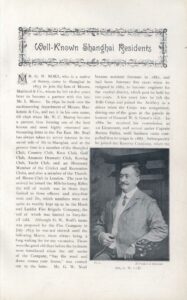
Figure 1: Social Shanghai, January-June 1908.6
Secondly, executing the Yachting races along the bund illustrates how British settlers used the site to reinforce their identity spatially. As figure 2 illustrates, it is clear that the Bund is a site of exerting British culture and national identity through architecture and leisure. Sailing and rowing were primary opportunities to display agility and skill whilst asserting spatial control over the bund. These club also used their institutions and infrastructures to generate British imperialism within Shanghai’s international settlement during the decline of the Shanghailander political authority. By racing with British settlers from the Hong Kong yacht club to provide a vector through which the British settlers of Shanghai could associate themselves with the colonial authority of Hong Kong. The Hong Kong Telegraph and the China Herald report extensively on the relations and competitions between the two British yachting clubs.7 This essay argues that this relationship was co-constitutional. Whilst the Shanghailanders need to outsource their authority as British Settlers form their more stable Hong Kong associates, equally British colonial masculinity was supported significantly by the use of sport to illustrate their capacities and therefore the Hong Kong club also boosted their colonial identities from the racing tournaments.
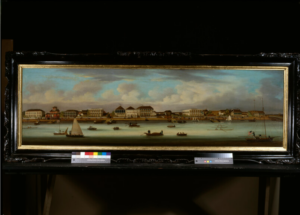
Figure 2: The Bund, Shanghai by Sunqua (1830-1870).8
Thirdly, as the Nationalist Revolution took hole in 1923-1928, dependence on Leisure as a source of strength established competing masculinities. with the boom of Chinese clubs were challenged by Chinese alternatives in the leisure and club scene, no evolution occurred within British circles. Therefore, using articles from North-China Herald, China Mail and the Hong Kong Telegraph to track the growth of their Chinese counterpart clubs, the this essay aims to analyze how this decline impacted the relationship between the British and other ethnic groups within the international settlement as they were no longer able to rely on this source of colonial masculinity which was fundamental to asserting their control in treaty port Shanghai.
This essay will argue that the creation of social anticipation and a group mentality through clubs like the Yacht Society were established to separate the British Shanghailander from other international settlers and local Chinese residents. Consistent records of races between Shanghai and Hong Kong Yacht and Rowing Clubs further illustrate that this was an inter-treaty port social system through which British treaty port settlers were able to justify each other’s permanency.
- Ning Jennifer Chang, ‘Women in the Chase: sports Empire, and Gender in Shanghai, 1860-1945’, Chinese studies in History 54, no. 2 (2021), pp.130-148. [↩]
- Christian Henriot, ‘The Shanghai Bund in Myth and History: An Essay through Textual and Visual Sources,’ Journal of Modern Chinese History 4, no. 1 (2010), pp.1–27 [↩]
- Robert Bickers, ‘Shanghailanders: The Formation and Identity of the British Settler Community in Shanghai 1843-1937’, Past and Present (1998), pp.161-211. [↩]
- North China Daily News and Herald Ltd., ‘Social Shanghai: A Magazine for men and women’ Vol V (January-June 1908), p.31. Accessed at: Social Shanghai Vol V January-June 1908 : Shorrock, Mina : Free Download, Borrow, and Streaming : Internet Archive (accessed 20/03/2024) [↩]
- ‘Social Shanghai: A Magazine for men and women’ Vol V (January-June 1908), p.31. Accessed at: Social Shanghai Vol V January-June 1908 : Shorrock, Mina : Free Download, Borrow, and Streaming : Internet Archive (accessed 20/03/2024) [↩]
- North China Naily News and Herald Ltd., ‘Social Shanghai: A Magazine for men and women’ Vol V (January-June 1908), p.31. Accessed at: Social Shanghai Vol V January-June 1908 : Shorrock, Mina : Free Download, Borrow, and Streaming : Internet Archive (accessed 20/03/2024) [↩]
- Anonymous 1925, Feb 09. HONG KONG YACHT RACERS WINNERS FROM SHANGHA, The China Press (1925-1938), p.1. (Accessed at: HONGKONG YACHT RACERS WINNERS FROM SHANGHAI: Full Account Of Interport Regatta; Some Very Good Sailing – ProQuest) Accessed on 20/03/2024 [↩]
- The Bund, Shanghai by Sunqua (1830-1870) in the Ashmolean Library collection, Accessed at: https://collections.ashmolean.org/object/359962 (Accessed 20/03/2024) [↩]
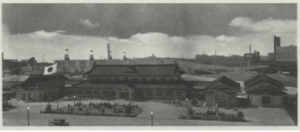
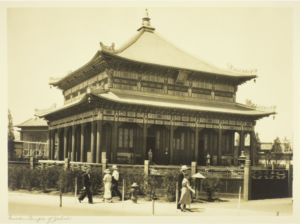
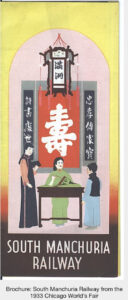
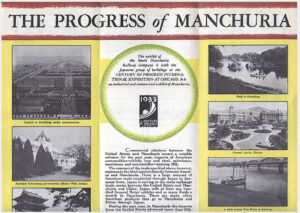
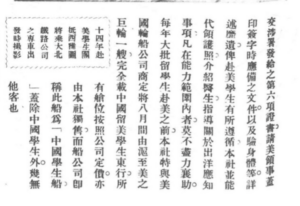 Excerpt 1. the exclusivity of passengers
Excerpt 1. the exclusivity of passengers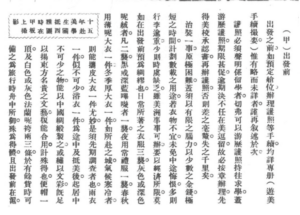 Excerpt 2. The instruction of the dress code
Excerpt 2. The instruction of the dress code